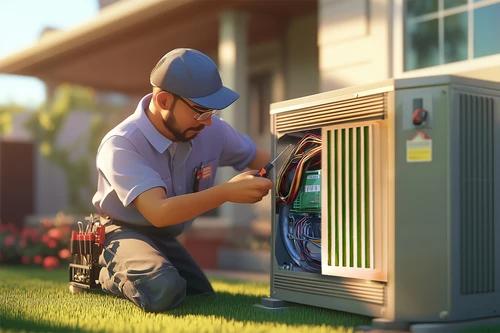Furnace Fan Works but No Heat: Common Causes and Fixes

When your furnace fan is running but there’s no heat coming from your vents, it can be frustrating – especially on a cold day. A running fan without heat typically indicates that while the blower motor is operational, another part of your heating system has failed. HVAC.com explains the common causes of this issue and outlines the repairs needed to restore heat to your home.
1. Thermostat Issues
Your thermostat controls the entire heating system, and if it’s not set correctly or is malfunctioning, your furnace may not generate heat. If the fan setting is switched to “On” instead of “Auto,” the blower will run continuously even when the furnace isn’t heating.
If you notice the furnace fan works but there’s no heat, make sure your thermostat is set to “Heat” and the fan mode is set to “Auto.” If the settings are correct but there’s still no heat, try replacing the thermostat batteries to see if the problem persists. If the thermostat is defective, it may need to be replaced by an HVAC technician.
2. Faulty Ignition System
Gas furnaces use an electronic igniter or a pilot light to start the heating process. If this component fails, the furnace will not ignite, but the fan may still blow air.
For furnaces with a standing pilot light, check if it’s out and relight it according to the manufacturer’s instructions. If you have an electronic ignition system, listen for clicking sounds or look for visible damage. A faulty igniter will need to be replaced by a professional HVAC technician.
3. Gas Supply Issues
If your furnace isn’t receiving gas, it won’t be able to generate heat. This could be due to a closed gas valve, an issue with your utility provider, or a faulty gas valve inside the furnace. The furnace fan works but there’s no heat because the system isn’t receiving fuel.
To check if the furnace gas valve is open, find the valve near the gas line and make sure the handle is parallel to the pipe; if it's perpendicular, the valve is closed. If other gas appliances in your home aren’t working, contact your gas provider to check for service issues. If the gas valve in the furnace is defective, a professional will need to replace it.
4. Malfunctioning Flame Sensor
The flame sensor detects whether a flame is present when the gas valve is open. If the sensor is dirty or faulty, it may not detect the flame correctly and shut off the gas supply. You may notice the furnace fan works but there’s no heat. A technician can clean the flame sensor with a fine abrasive pad or steel wool. If cleaning doesn’t fix the issue, the sensor may need to be
replaced.
5. Dirty or Clogged Air Filter
A clogged air filter restricts airflow and can cause the furnace to overheat. When this happens, the system’s safety features may shut down the burners, but the fan will continue running to cool the unit down. Check your furnace’s air filter and replace it if it’s dirty or clogged. Regularly changing your filter (every 1-3 months) can help prevent overheating issues and improve overall system efficiency.
6. Faulty Limit Switch
The limit switch monitors your furnace’s temperature and shuts off the burners if the unit overheats. If the switch is faulty, it may keep the burners off even when the furnace is cool. An HVAC technician can test the limit switch to determine if it’s working properly. If the switch is defective, it will need to be replaced to allow the furnace to heat again.
7. Faulty Blower Motor or Control Board
In some cases, the furnace’s blower motor or control board may have an issue that prevents the burners from turning on or causes the fan to run even though the furnace is not producing heat. An HVAC professional will need to inspect the blower motor and control board for faults. If the motor is defective or the control board isn’t sending signals properly, repairs or replacement are needed.
